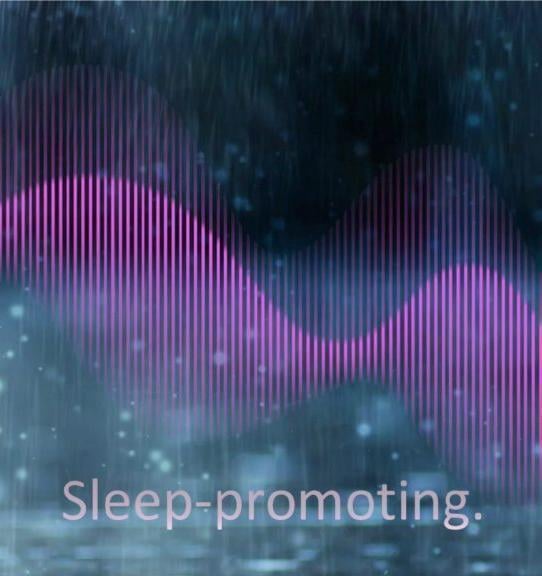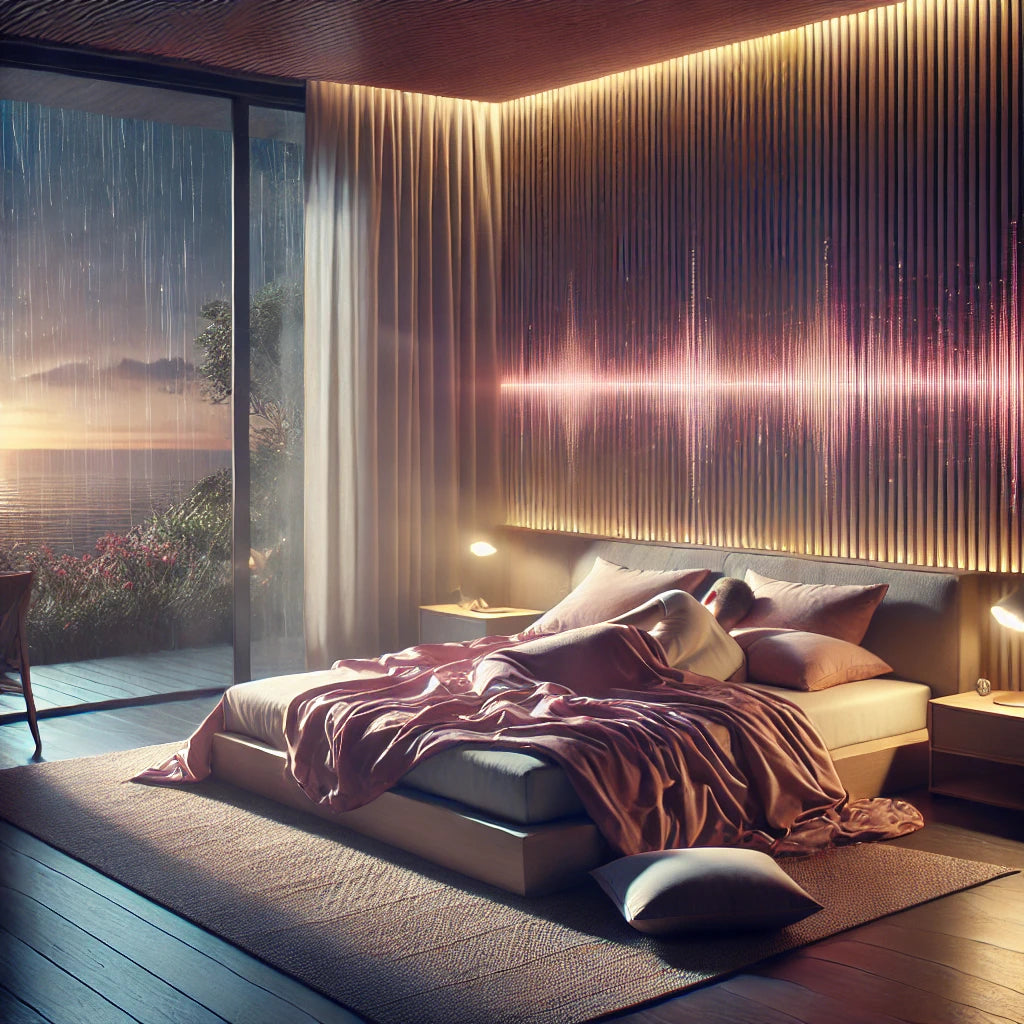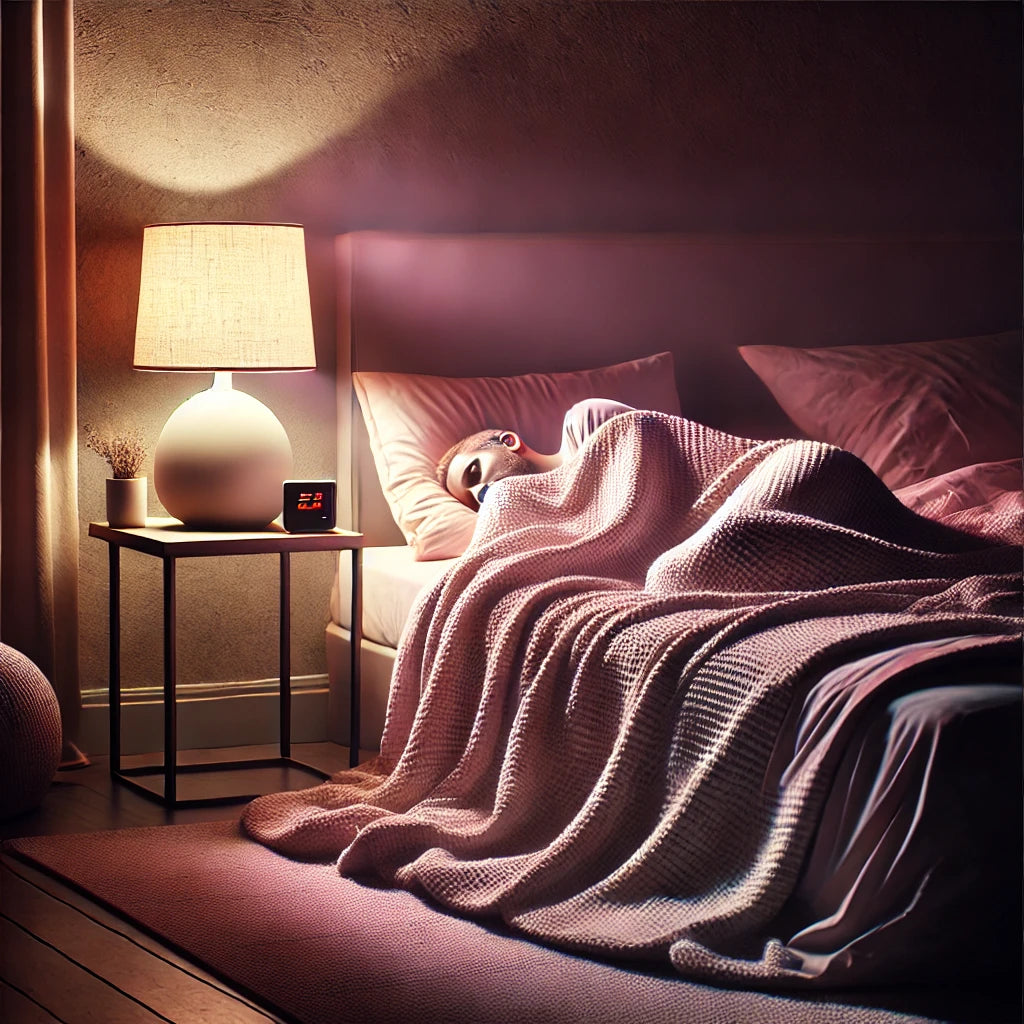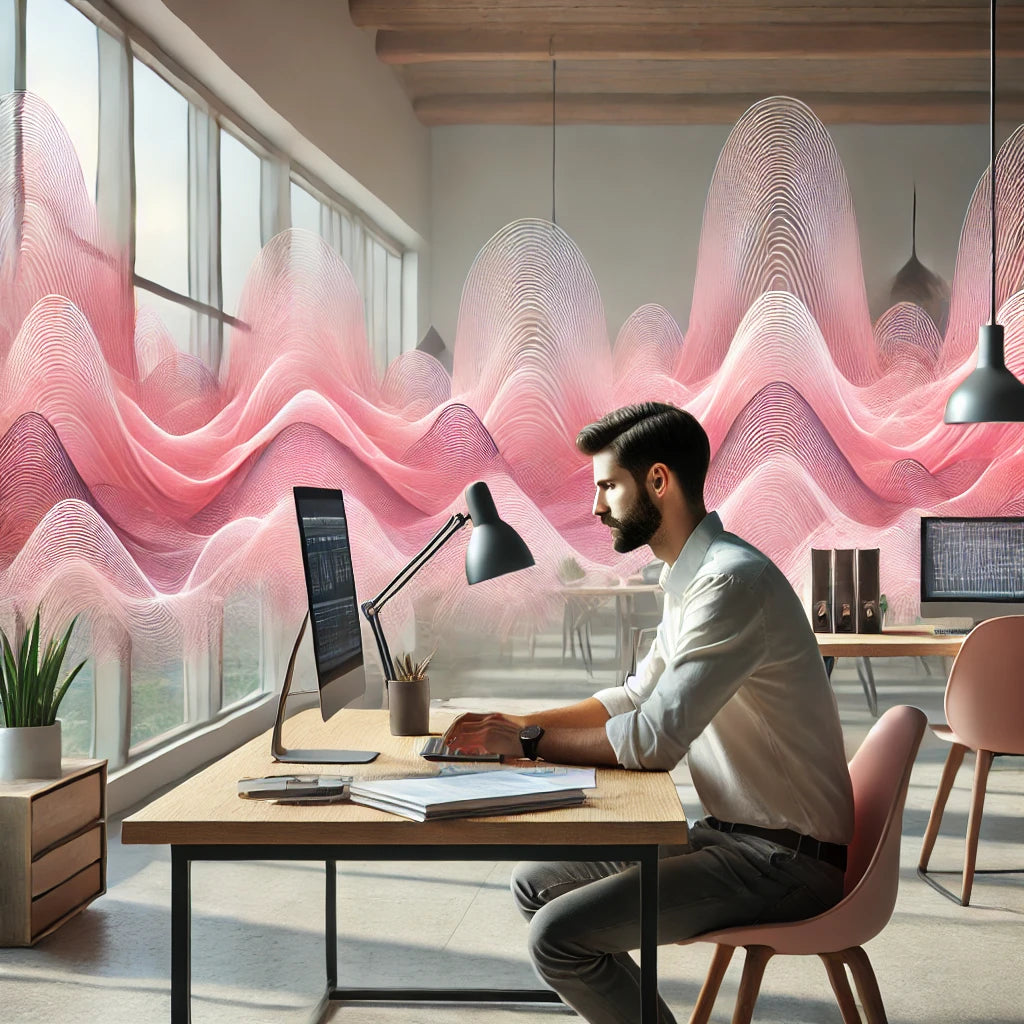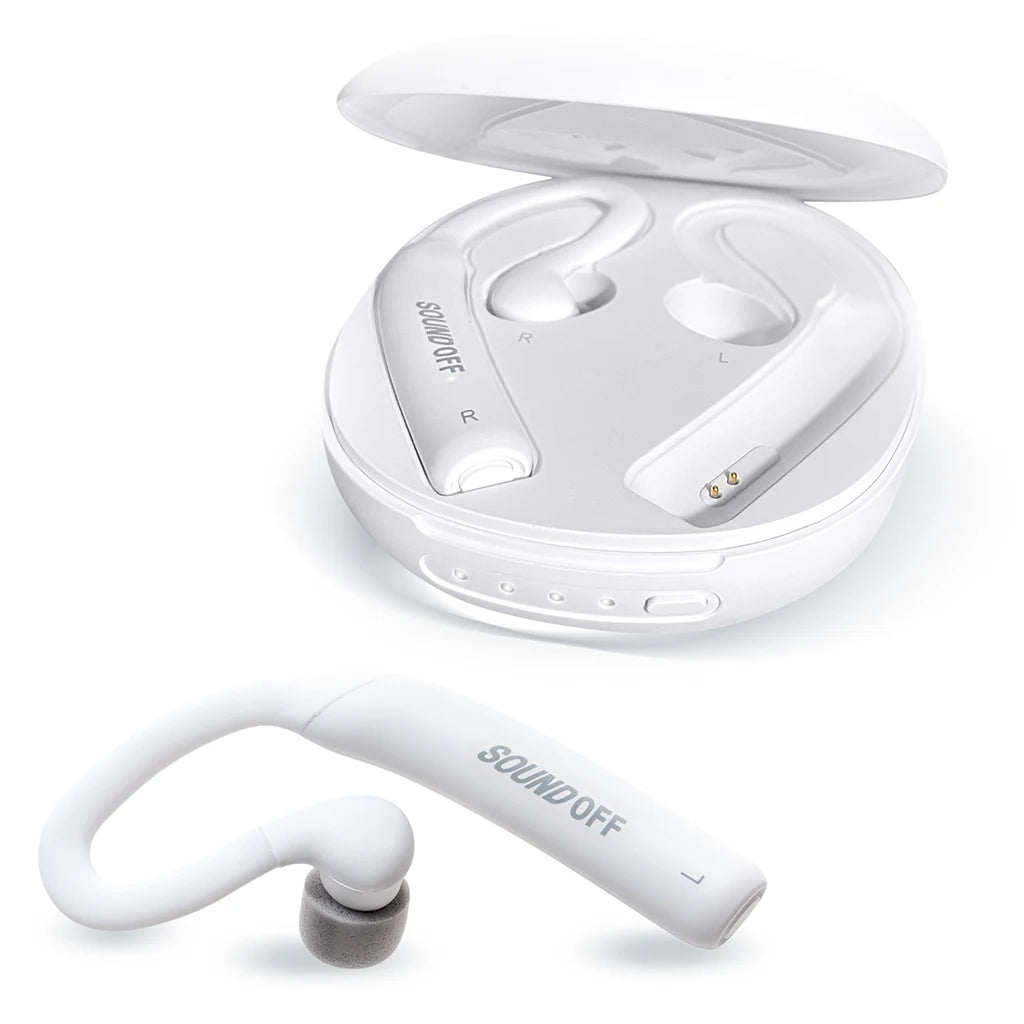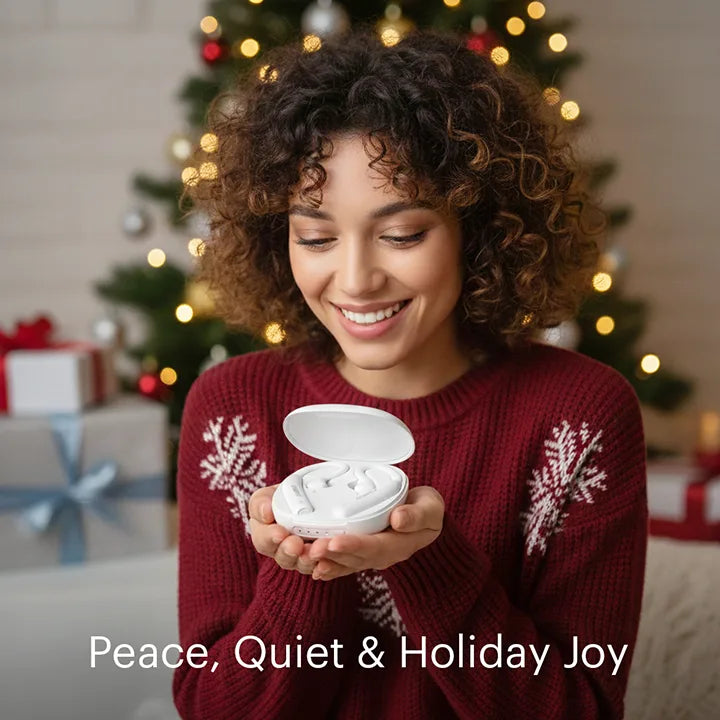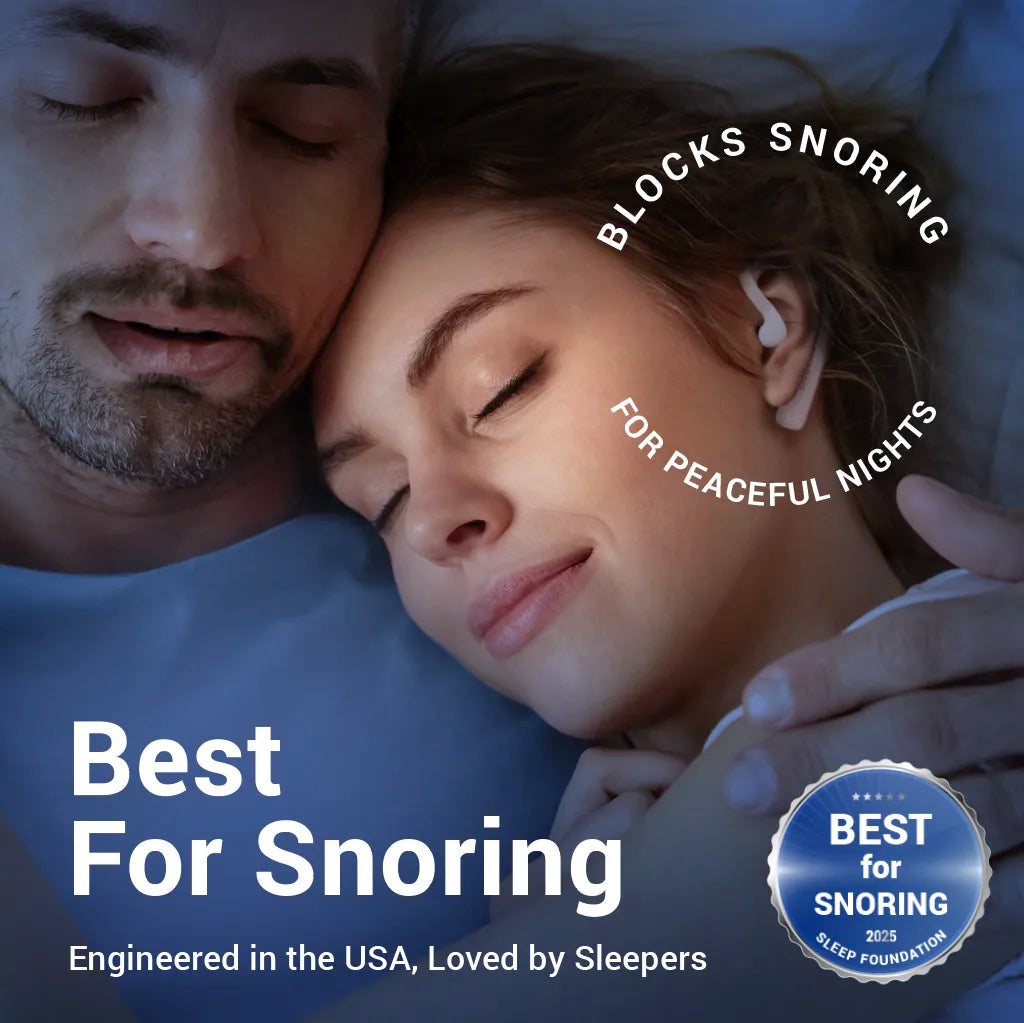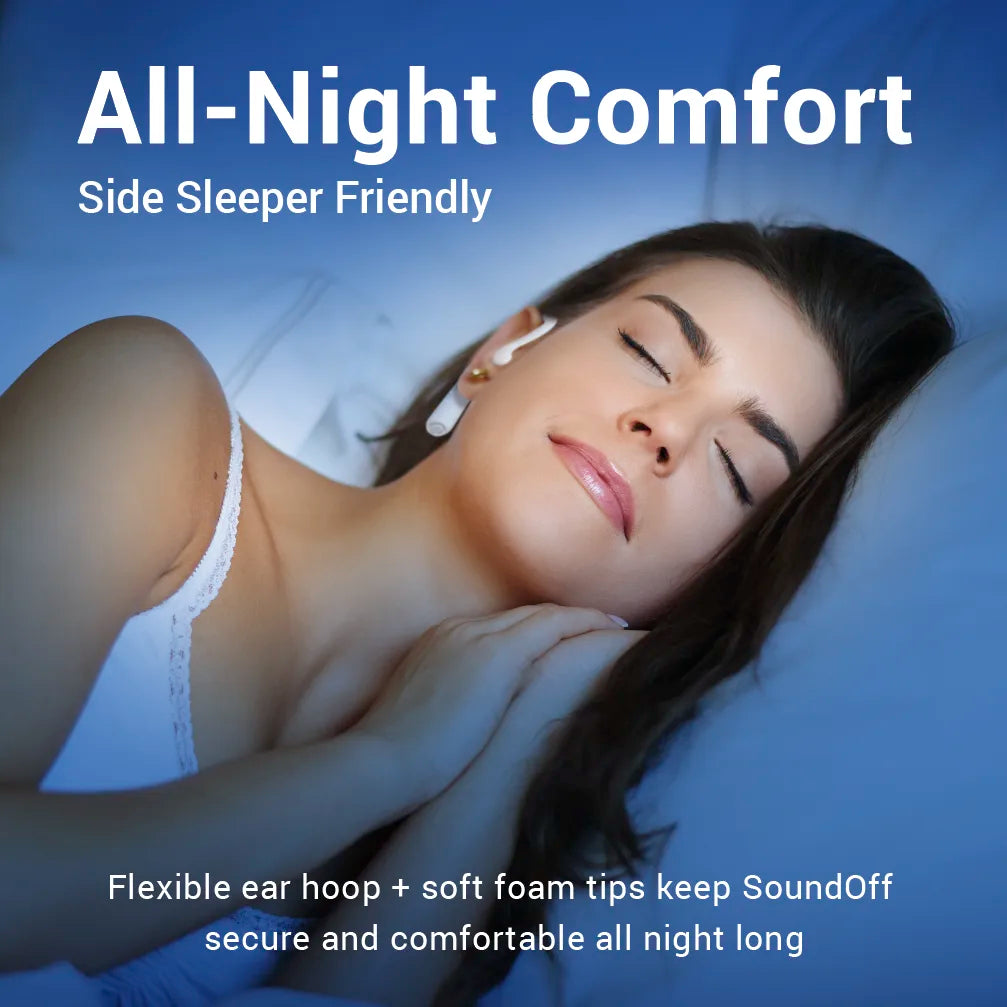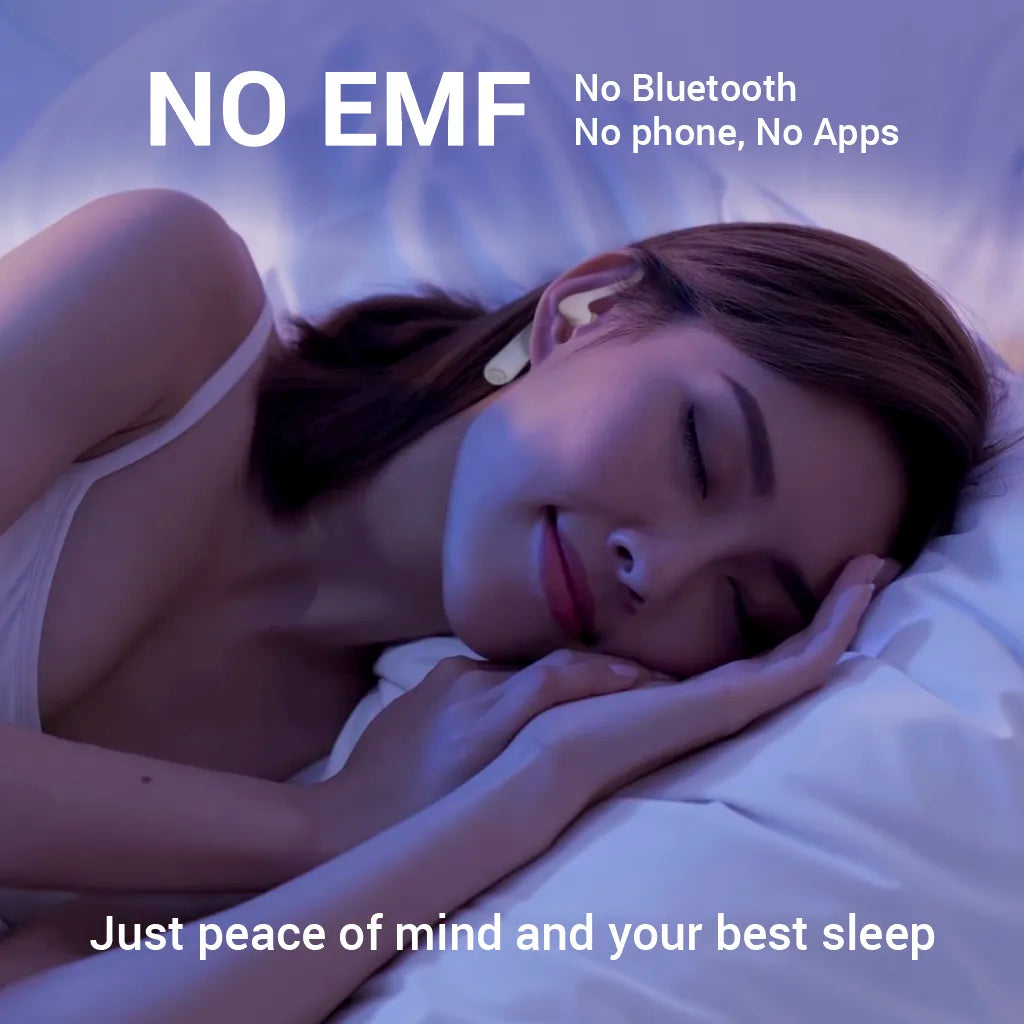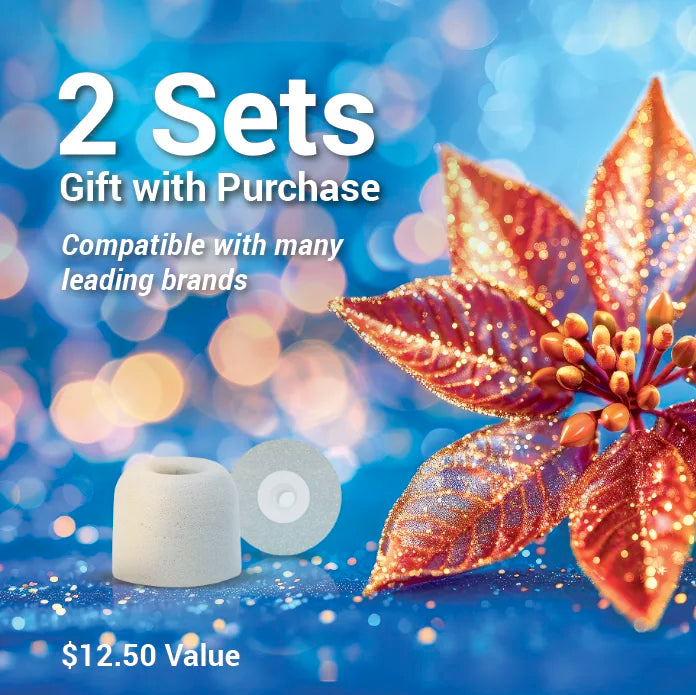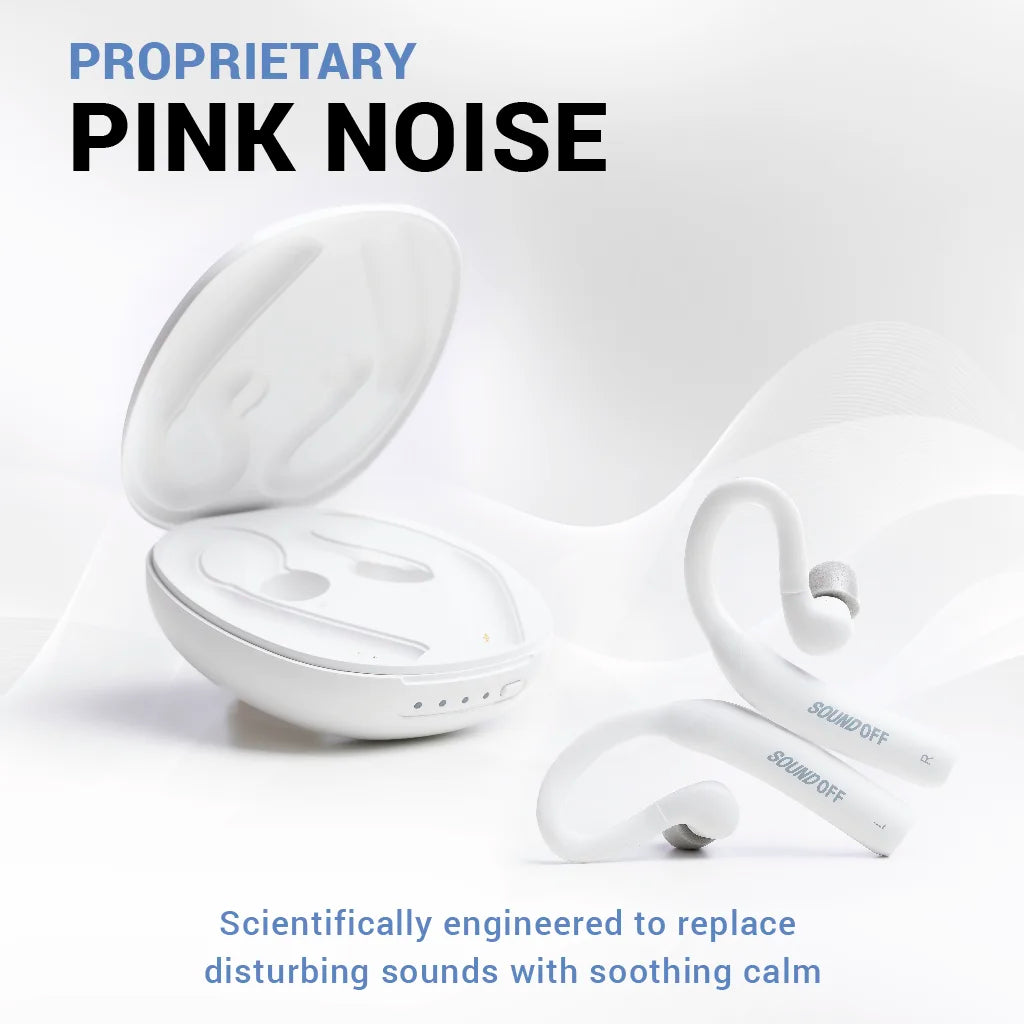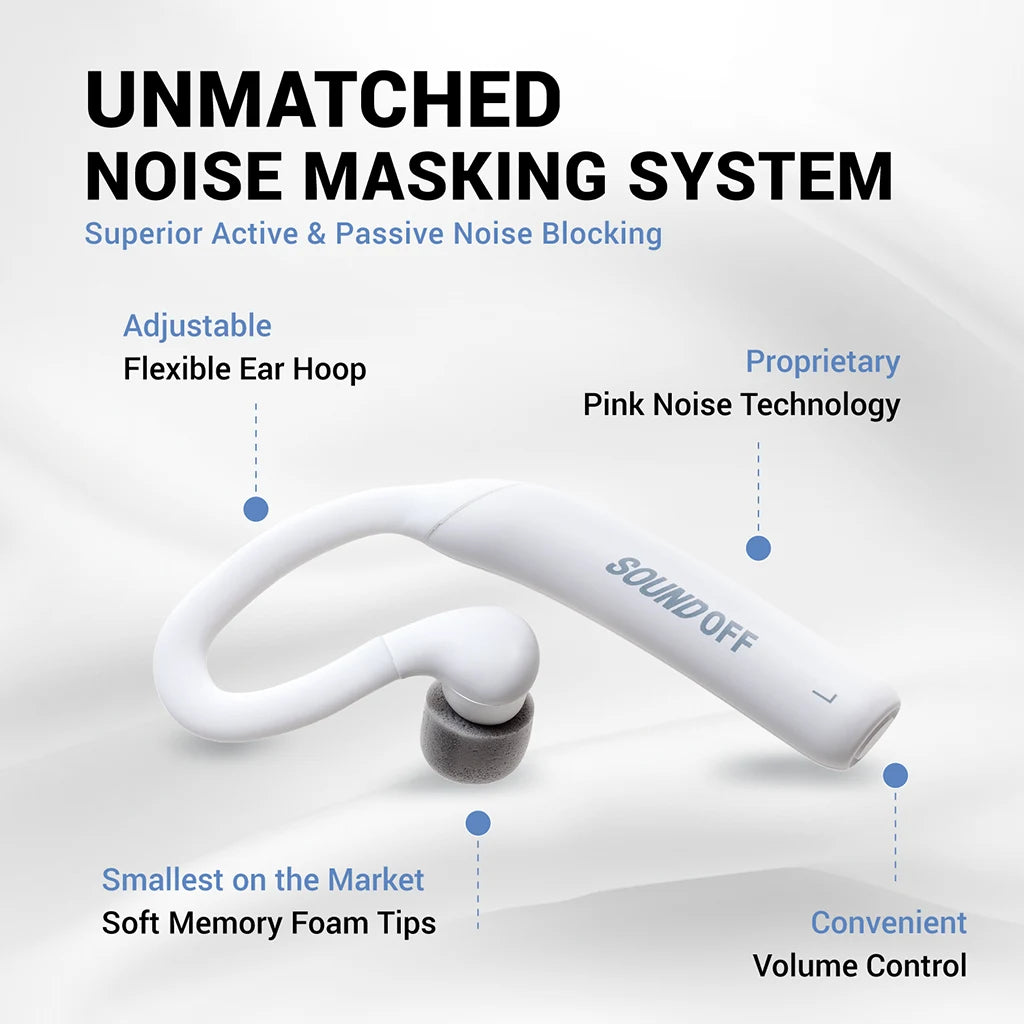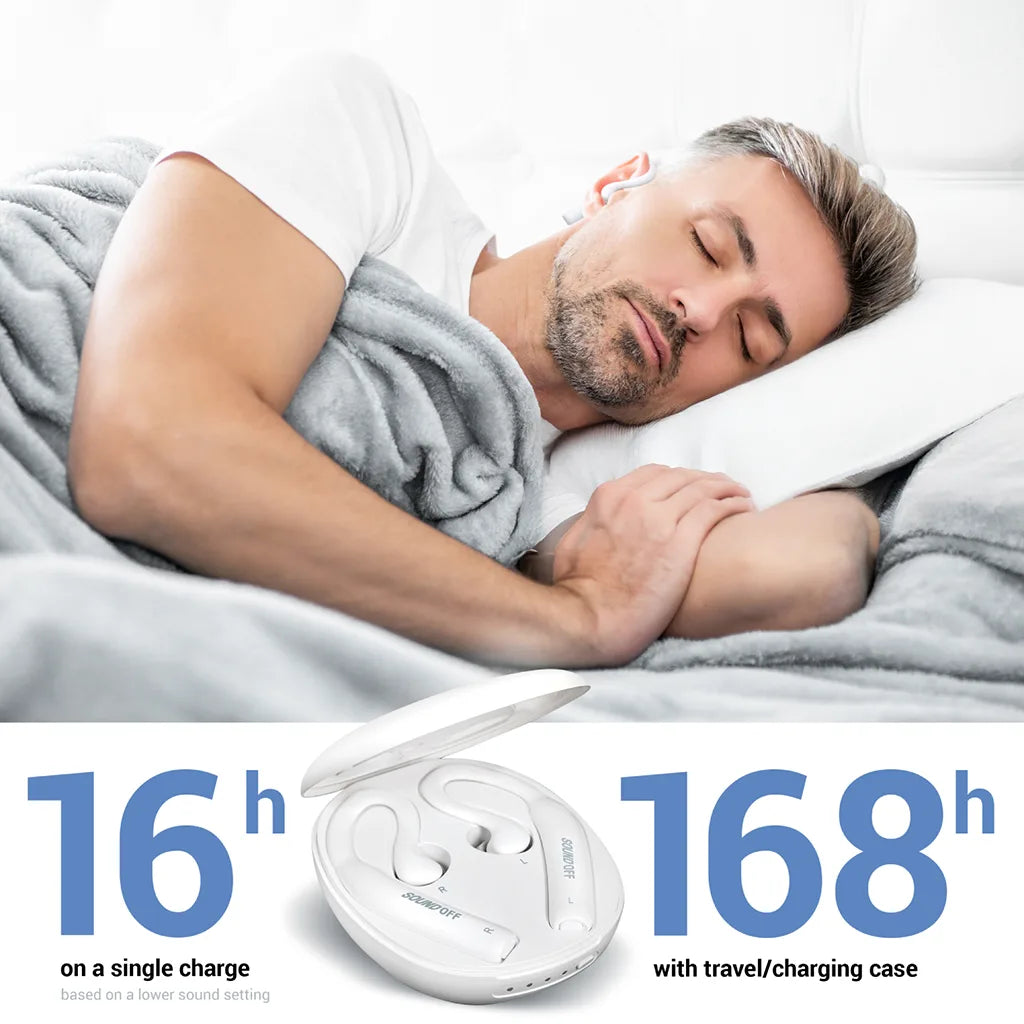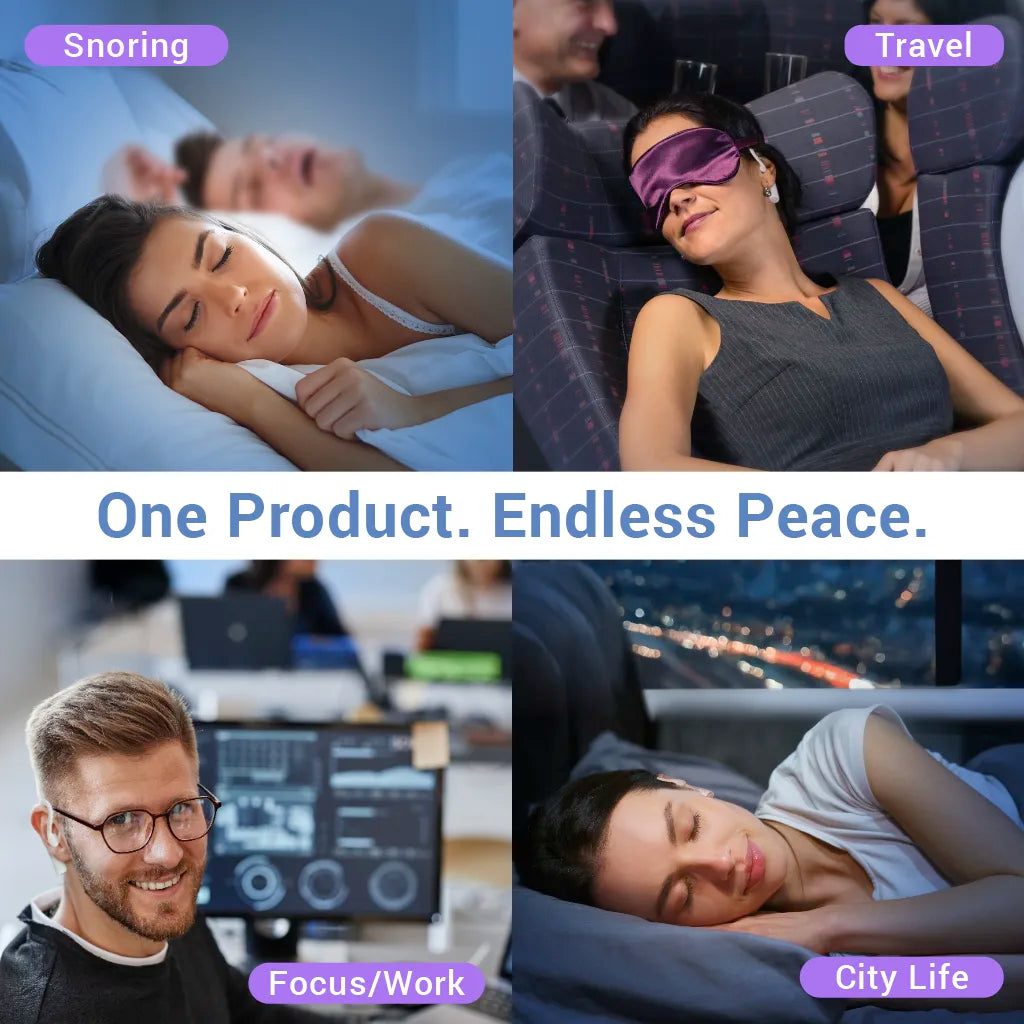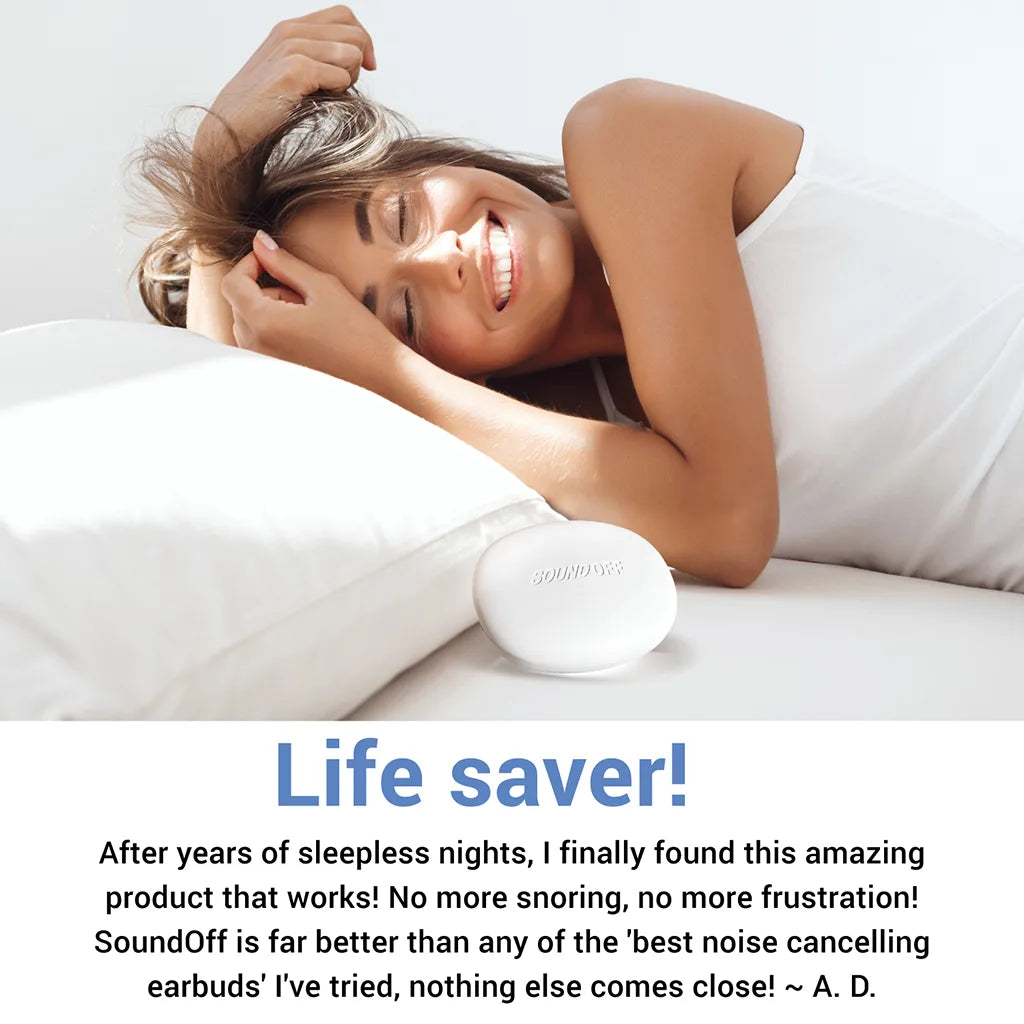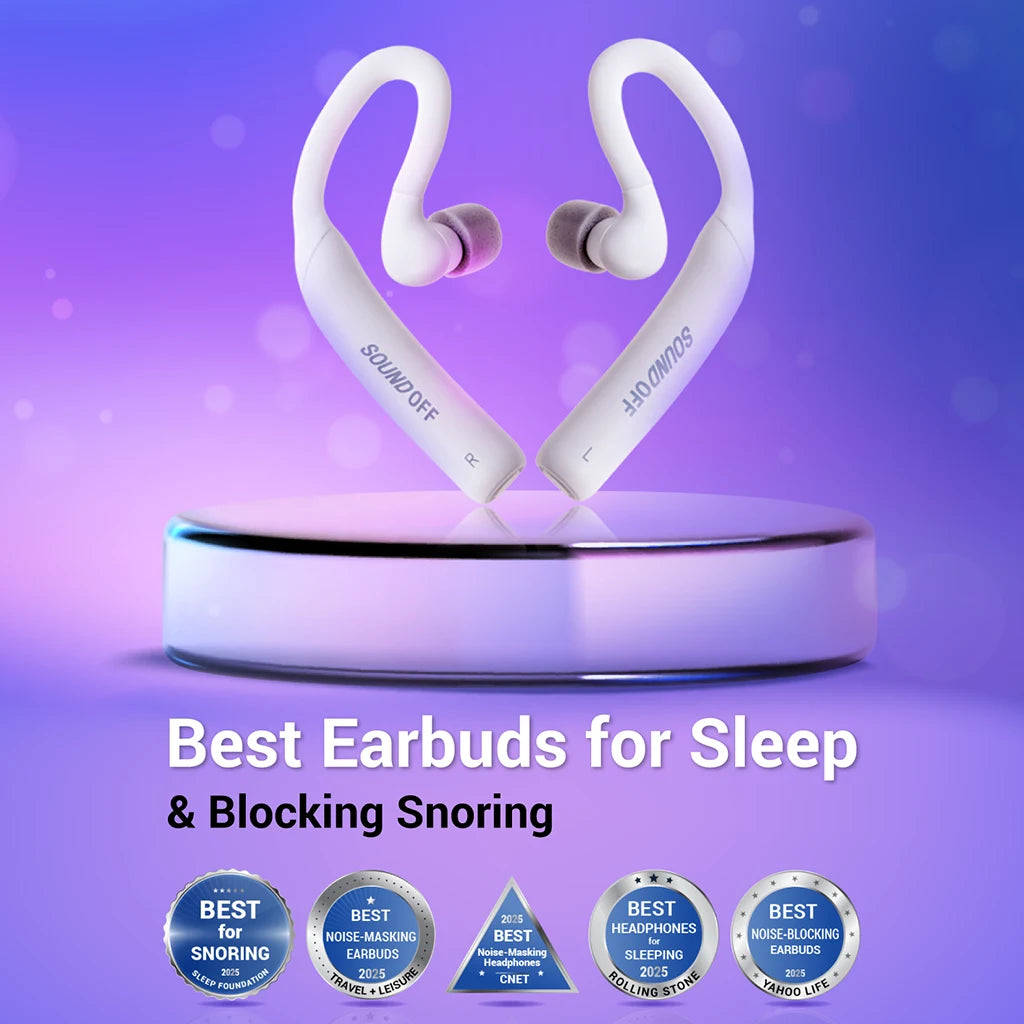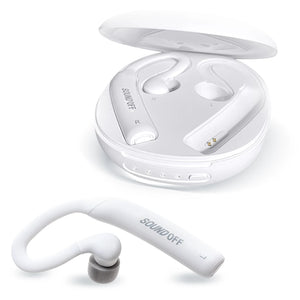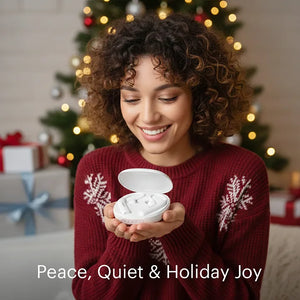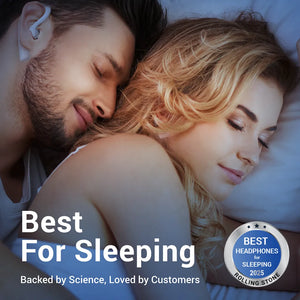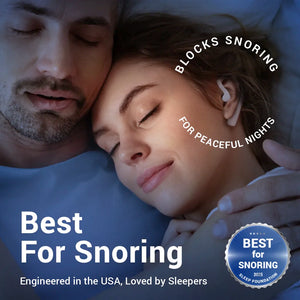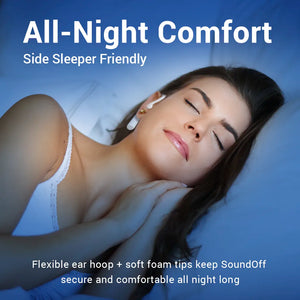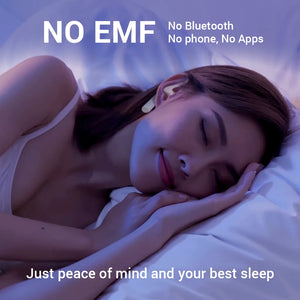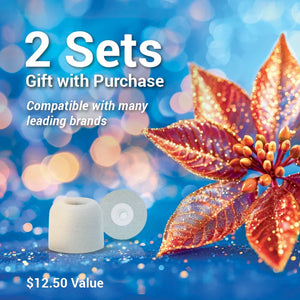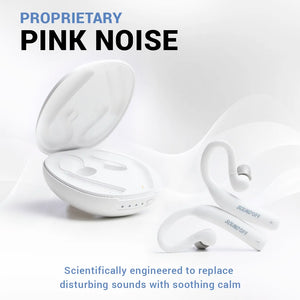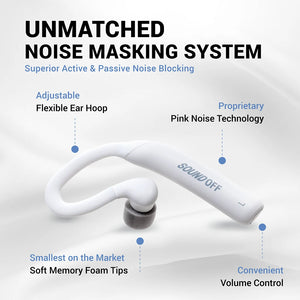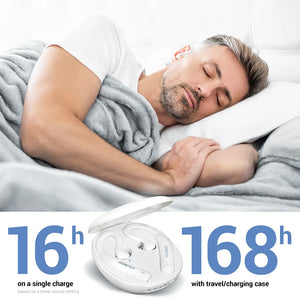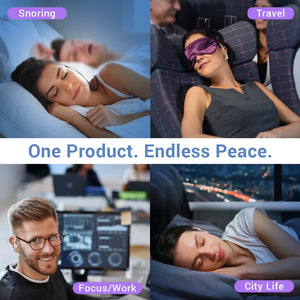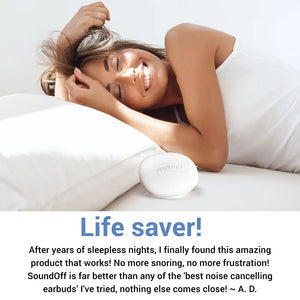
Pink Noise for Sleep
Is there any better way to fall asleep than to the sound of waves crashing on the nearby shore? Pink noise helps us relax and fall asleep because it emulates the soothing sounds we hear in nature—like the sound of ocean waves, rain falling, or leaves rustling in the wind. This makes using pink noise for sleep a no-brainer!
Speaking of brains, the effectiveness of pink noise in improving our ability to sleep, has everything to do with how this sound interacts with the brain. Let’s look at what that means, and how Pink Noise goes beyond helping us achieve better sleep, to ultimately promoting better brain health.
Sleep and the Brain
Our brains produce slower brain waves during sleep. These slower brain waves make it possible for our bodies, and brains, to achieve rejuvenating rest. Listening to pink noise via sound machines or earbuds appears to amplify the strength of these brain waves during deep sleep. Thus, falling asleep faster, sleeping deeper longer—and waking up less often, are all benefits of using pink noise to improve sleep.
This explains why experts in psychology, and Neuro-Field specialists, are finding Pink Noise effective in treating sleep disorders like Insomnia. It's also being used to treat brain-based conditions such as anxiety and depression—which can ultimately contribute to poor sleep health.
What is Pink Noise?
Pink noise is a steady, even sound that filters out distracting or obtrusive noises. While similar to the more familiar White Noise, Pink Noise uses deeper tones which produce a more soothing sound. Simply stated, using Pink Noise to help sleep offers a gentler auditory experience—which helps you relax and settle into a peaceful slumber.
Why is it called “Pink?” Just as different light frequencies are assigned color names (blue, violet, white…) sonic hues are assigned color names based on their mixture of sound frequency. These “colored” noises contain a wide audible spectrum—but each hue has a greater intensity in a narrow band of frequencies. In the case of “Pink” noise, it is the lower frequencies we hear more intensely. Some say it is called Pink due to a pink appearance in the visible light of the power spectrum.
How does it differ from White noise?
White noise machines, pink noise machines, brown noise, noise masking earbuds... which color sound and delivery method should you choose to help you sleep better? Let's look at the colors first...
Pink Tones
The power per hertz, in pink noise, decreases as the frequency increases. Whereas white noise has equal power per hertz throughout all frequencies. This means we hear the lower frequencies in pink noise louder and more clearly than the higher frequencies. Because it has equal power at each octave level, (whether halving or doubling in frequency,) pink noise carries an equal amount of noise energy.
The human ear perceives the result as a pleasant, even sound—comparable in tone to the relaxing sounds found in nature. This is why pink noise is favored for drowning out ambient noise to help one fall asleep and stay asleep.
White Tones
White noise, by comparison, uses a mix of sound frequencies to produce a noise that sounds more like static. Some like it as a background noise—others, not so much. This intense sound is high-pitched. So, while effective at blocking certain noises in certain conditions—it is not necessarily pleasant or soothing to the human ear. This is because our ears tend to be sensitive to those higher frequency tones—causing them to feel louder.
Sounds that make you go Ahh... or NOT
To easily understand the tonal differences between White Noise and Pink Noise...
Try making these two very different sounds with your mouth:
- Begin with the hard SSS sound… (not unlike an angry cat)—which might make you go YIKES!
2. Now, make the Shh sound… (soft, like a whisper)—Ahh…, doesn’t that sound more relaxing?

What do Experts say about Pink Noise for Sleep?
Induces more stable sleep...
A number of academic studies conducted to observe the use of pink noise for improving sleep, have yielded insights that can help us understand how Pink Noise interacts with the brain. One study published by the National Library of Medicine began with the hypothesis that steady pink noise is able to change the complexity of brain activity and might therefore significantly impact sleep.
The conclusion reached from that study: Steady Pink Noise does in fact have a significant effect on reducing brain wave complexity which induces more stable sleep time—and thereby improves sleep quality.

Deeper sleep boosts memory
A Northwestern Medicine study had interesting revelations. It found that the gentle sound stimulation of Pink Noise, enhanced deep sleep. It also recorded that the deeper sleep experienced by participants also boosted memory in older adults. This is great news because the ability to achieve deep sleep decreases as we age. We need that deep sleep for memory consolidation—lack of sleep contributes to cognitive decline.
Subjects in that Study received one night of the Pink Noise stimulation and one night of “sham” stimulation (the identical sleep study procedure minus the acoustic stimulation,) and were given memory tests the following mornings. The tests showed improved recall, by a few percent, after the sham stimulation—notably, those positive memory results tripled following the Pink Noise stimulation.
Dr. Phyllis Zee, professor of neurology at Northwestern University Feinberg School of Medicine and a Northwestern Medicine sleep specialist, feels this simple non-medication Pink Noise approach may help to improve brain health. She is quoted as saying: “This is a potential tool for enhancing memory in older populations and attenuating normal age-related memory decline.”
Promising for overall brain health
Harvard & Yale trained psychiatrist, Suruchi Chandra MD, believes Pink Noise is more promising than White Noise when it comes to brain health. In her blog post “Pink Noise for Better Sleep, Memory, and More,” she explains why:
- It can sound more soothing and be more calming for the nervous system.
- Our brain cells communicate through brain waves that follow a pattern similar to Pink Noise. Because pink noise can match our brain wave patterns, it may be more stabilizing for the brain.
- As our brains age, they produce more white noise and less pink noise. In other words, pink noise may be associated with younger and healthier brains.
Fewer meds
The ability of Pink Noise to promote both relaxation and better focus has led to its wider use for therapeutic applications. Sleep Specialists including those at the worldwide Neurofield Treatment Centers are successfully addressing sleep and brain-based conditions using fewer medications and more of the Sound and Brain-Stimulation therapies—including Pink Noise.
Will Pink Noise help YOU sleep?
Pink Noise works in two ways to help you fall asleep, sleep more deeply, and stay asleep longer:
- Pink Noise relaxes your brain to help ease you into a good night’s sleep
- It blocks out obtrusive noises that can prevent you from falling asleep or staying asleep
Many people find they get their best sleep ever using Pink Noise. Our SoundOff Sleep noise-masking earbuds play a custom-shaped Pink Noise designed by a PhD in psychoacoustics—customers have called them Lifesaving, Relationship-saving, Sanity-saving, and Lullaby-esque.
More than a few have said they use SoundOff even when there is no noise to block—because they love the sound of the Pink Noise. Mainly though, they’re fans of SoundOff earbuds because they completely block loud noises. They report sleeping through snoring spouses, noisy neighbors, loud hotels, banging pipes, storms, fireworks, and even freight trains.
You and your sleep
Yes, Pink Noise can help you sleep but we’re not just talking about noise here. You’re the captain of your sleep. Over 50 million Americans suffer from sleep deprivation and not all of that sleep loss is due to barking dogs, car alarms, or loud roommates. How you care for your body during the day, and how you wind down before bed can have a big impact on your sleep—regardless of anything else you may try.
Make sleep a priority by practicing good sleep hygiene, making healthful choices during the day and practicing a good wind-down routine before bed. Start now on your journey to better sleep…you can begin by focusing on these 3 areas:

Your sleep space should be tailor-made for sleeping.
In addition to practicing the accepted good sleep hygiene basics, your sleep space should be tailor-made for sleeping—cool, dark, comfortable, and peaceful. Here are some tips:
- Set your thermostat no higher than 72 degrees.
- Use soft light or no light—and nix the blue light emissions.
- Invest in comfortable bedding—a good mattress, the right pillow.
- Secure your peace & quiet with Pink Noise
Your quality of sleep begins when you wake up in the morning.

Do you hit the snooze button or hit the ground running? Do you choose healthy foods? Get enough sunshine and exercise?
- You can improve your days and prime your body to sleep betterat night by making healthier choices during the day.
- Remember, your brain will relax more easily if it's not over-stimulated with things like sugar, or other addictive substances.

Relaxation is the easiest way to transition into sleep.
If you’re thinking of relaxation as a luxury, think again!
- Relaxation is essential. It doesn’t just help you get to sleep easier—it helps preserve your health, so you get more out of life.
- Noise blocking will work better if you don’t already have too much noise inside your head—and if you haven’t taken work to bed with you!
Best way to experience Pink Noise for Sleep
When you’re ready to try Pink Noise, go for our Noise-Masking Earbuds. After all, a superior sound like Pink Noise, deserves a superior delivery system. Noise masking blocks unwanted sounds by replacing them with a more pleasant sound. The SoundOff Sleep Sound, delivered via our dual masking earbud technology—ensures you’ll only hear our soothing Pink Noise—not your noisy neighbors or snoring partner.
"These sound off sleep buds are amazing! I love the sound they have... It puts me to sleep very quickly, and I also do not have to hear the loud snoring anymore. You really can’t hear anything when you have these in."
- Kayley R.
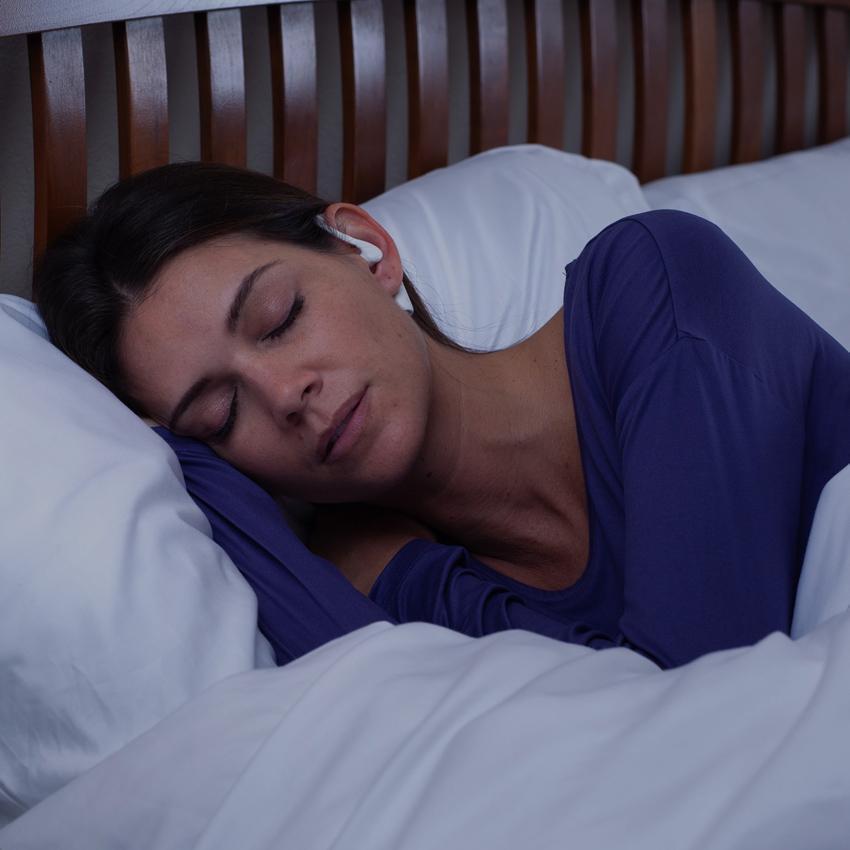
Active & Passive Noise Masking:
When you want to completely block out all sound, choose noise masking—over noise cancelling. Noise cancelling will only reduce the sound, not completely block it. Also, it's important to note, that truly effective noise masking, is a two-part process.
SoundOff combines active noise masking—the Pink Noise sound used to block the noise that’s disturbing you, with passive noise masking—Comfortable Memory Foam Tips which use your body heat to form a seal around the earbud. This prevents other sounds from entering the ear to make sure you only hear the Pink Noise playing in the earbud.
Calming your brain with our specially designed Pink Noise will help you relax and ease into peaceful, deep, uninterrupted sleep. Isn’t it time you got a good night’s sleep? SoundOff can help you get the sleep you deserve all night, every night.
The SoundOff solution
SoundOff earbuds have 8 volume levels and are highly effective at noise masking—both actively and passively—at lower volumes. This provides a comfortable, reliable sound barrier to any noise that’s keeping you awake. There is no more effective solution on the market. We guarantee it. Try SoundOff risk-free for 30 days—you’ll Love what you can’t hear!
Wishing you all the best sleep…
Resources:
Sound waves enhance deep sleep and memory - Northwestern Now
Scientific American - Color of Noise
Pink Noise Waveform Photo Credit: Dennis Maney / Penn State / Creative Commons

